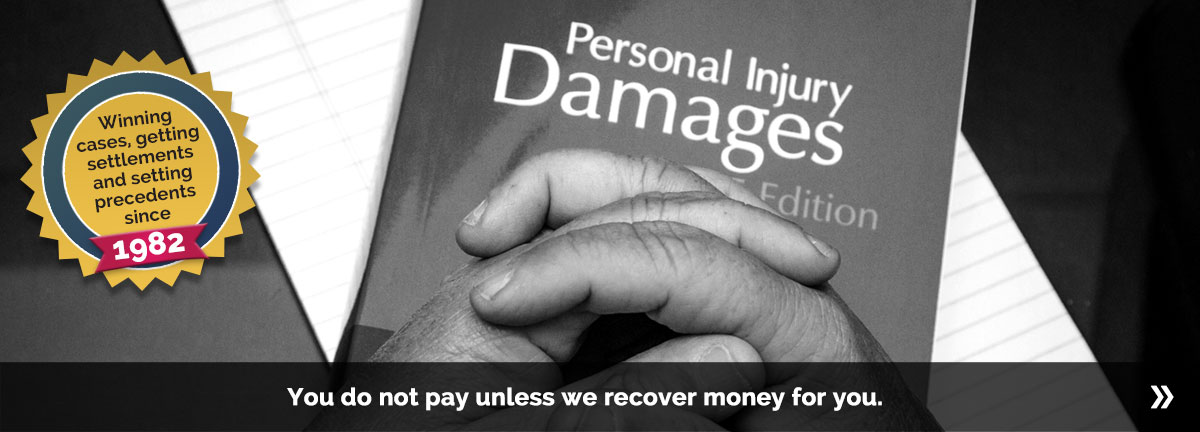With three major snowstorms already this winter and perhaps even more to come, Torontonians know all too well the kind of hazards that melting snow and dropping temperatures can bring. A night out at the restaurant, or a walk to the grocery store can lead to a slip and fall incident and unforeseen lasting injuries. However, knowing who to make a claim against for your injuries is not always an obvious exercise and requires a thorough analysis of the current statutory provisions and common law precedents. Depending on where one sustains their injury, there exist various thresholds of liability that we must consider if a claim is to be successful. In this blog entry, we explore the facts and law as to when a duty of care can arise within the context of private property owners, municipal property, or mixed public and private spaces. Liability of Private Property Owners According to section 3(1) of the Occupiers Liability Act “an occupier of premises owes duty to take such care as in all the circumstances of the case is reasonable to see that persons entering on the premises, and the property brought on the premises by those persons are reasonably safe while on the premises“. This view was reinforced in Waldick v Malcom [1991] when the Supreme Court of Canada expressed that the clear intention of the Act was to “replace, refine and harmonize the common law duty of care owed by occupiers to visitors on those premises”. The court went on to say that the occupier had to make the premises reasonably safe, even if the plaintiff had knowledge of the hazard and its potential dangers. But what exactly entails ‘reasonably safe’ precautions? While circumstances often vary from case to case, Ontario courts have opted for the objective standard with the phrase “system of maintenance” to interpret the facts. In Fragomeni v 108048 Ontario Corp [2006], an elderly man slipped and fell in the parking lot of a funeral home after attending a funeral. The snow from the morning along with the cold conditions created a hazard on the funeral home’s property. While the funeral home contracted its snow removal, the court was quick to find that in spite of their intentions, there was no clear procedure in place between the funeral home and the snow removal company to determine who was responsible for deciding to salt the parking lot. Fragomeni tells us that there must be a ‘system of maintenance’ present if the occupier is to avoid liability, however as Flentje v Nichols [2006] goes on to show us, the mere presence of a system is not enough. In Flentje, a 24-year-old woman slipped and fell in the restaurant parking lot of the defendant’s premises, suffering a broken leg that required two surgeries. The parking lot was snow-covered and slippery at the time of the accident and as the plaintiff alleged, the restaurant was found negligent in their failure to implement a reasonable system of snow and ice removal to ensure reasonably safe premises. The Court allowed the plaintiff’s action, and eventually came to the decision that while the restaurant owner had normally been diligent and conscientious in maintaining the parking lot on his own, his system of maintenance was haphazard and not reasonable for a commercial establishment at the time of the plaintiff’s accident. The Court went on to add that even if the restaurant owner had a reasonable maintenance system in place at the time of the slip and fall, it was not functioning appropriately on the evening of the plaintiff’s accident. The issue of reasonable safety with regards to private property owners tells us that in order for liability to occur, there must first be a ‘system of maintenance’ and second, it has to have been working at the time of the accident. Contacting your Toronto slip and fall lawyer will give you further insight into whether or not you may have a successful claim with regards to this. However, sometimes the failure of a system of maintenance does not necessarily help us determine who stands to be liable. Walkways, storefronts, access points from public to private property often muddy the lines between municipal and private property. Liability for Mixed Private Property and Municipal Sidewalks Bongiardina v York (Regional Municipality) [2000] is the leading case on the issue of the duty of care of owners of private property for slip and fall accidents taking place on adjacent municipal sidewalks. In this case, the Ontario Court of Appeal determined that there is normally no duty of care on a private property owner for a slip and fall accident taking place on adjacent municipal property. Even if, as were the facts of this case, there is a by-law placing an onus on the home owner to clear the path, no breach of duty can be found and will amount to little more than a fine. However, there are two major exceptions found in section 1 of Occupiers Liability Act and in the common law tort of nuisance. The Occupiers Liability Act section 1 stipulates that a party will be found to be an occupier where the person has “physical possession of the premises”; “responsibility for and control over the condition of the premises”; “responsibility for control over the activities carried on in the premises”; or “control over persons allowed to enter the premises”. This means, that in order to be identified as an occupier of municipal property, one must go out of their way to exercise control over the sidewalk in question (typically retail storefronts) or must assume exclusive (or near exclusive control) over the people entering on or off the sidewalk (clubs, bars, sport arenas). First, the case of Bogoroch v Toronto (City) (1991) is a classic example of how private property owner may be deemed to have physical possession of neighboring municipal property so as to make themselves an occupier for the purposes of the statute. The facts of the case describe a retailer that had readily placed signs and materials on the sidewalk to induce people to come in as they walked along. The store had even obtained a permit to use a certain portion of the sidewalk for such a purpose. The main issue of the case was whether the store was an occupier with respect to the entire sidewalk, or whether its duty was limited to the area under the permit. The Court decided that store liability applied to the entire sidewalk as the sidewalk was often used as an extension of the store itself, thus fulfilling the requirement of physical possession, as per section 1 of the Occupiers Liability Act. The permit was also instrumental in the Court reaching its decision, but it alone is not indicative of an intent to control. Some active exploitation of the sidewalk beyond mere incidental use is typically needed. Second, the case of Moody v. Toronto (City) (1996) facts included a municipal sidewalk used exclusively by patrons entering the Rogers Centre for sporting events. Based on this near-exclusive use, the fact that a number of Rogers Centre patrons had no alternative but to use the walkway and the fact that the number of people at the beginning and end of an event would make it impossible for a patron to watch for hazards on the walkway. Here, the court held that the Rogers Centre had “sufficient control over patrons allowed to enter the walkway” to be classified as an occupier. To differentiate with Bogoroch here the issue was not that the defendant had physical possession of the sidewalk, but rather that it exercised “control over patrons” and as such fell under the fourth definition of occupier as stipulated by the Occupiers Liability Act. Whether a case falls under the Bogoroch or Moody type fact pattern, the key ingredient to finding that a private property owner is an occupier of the neighboring municipal property would appear to be the purpose for which the property-owner uses the sidewalks. If it is more than just a route used for commuting, then it is unlikely that a duty can be established, but if it can be considered an extension, through owner’s exploitation of municipal property, and almost exclusively for the benefit of the owner, then liability can follow. Lastly, if neither of the fact patterns are present and a duty cannot be established under the Occupiers Liability Act, it may be prudent to turn to the common law tort of nuisance as first established in Rylands v. Fletcher (1868). The principles in this English case have been used and applied with some imagination by the courts of Canada. In Brazzoni v. Timmins (City) (1992) the neighboring TD Bank was found liable for a slip and fall accident on a sidewalk touching its property on the basis that water runoff from melting now on its roof and parking lot ran across the sidewalk creating a dangerous situation that the court concluded it knew or ought to have known was a hazard to pedestrians using the sidewalk. Applying an almost strict liability approach to the matter, the Ontario Court of Appeal found that negligence is not a pre-requisite for finding liability based on a nuisance of this type. However, issues of knowledge and foreseeability in cases that followed such as Simmons v. Etobicoke (City) (2002) have challenged the Ontario Court of Appeals strict liability approach in Brazzoni, and as such has caused a bit of a stir when it comes to attributing liability to runoff water. It’s best to consult your expert slip and fall Toronto lawyer to see where your case stands. Municipal Property Pursuant to section 44(9) of the Municipal Act 2001, the hurdle for a plaintiff trying to sue a municipality is quite high. Generally, the municipality is not liable for a personal injury caused by snow or ice on a sidewalk unless it was through gross negligence. The test for gross negligence can be found in the case of Cerilli v Ottawa [2006], where the court asks three things.
- Did the city have actual knowledge of the unsafe conditions?
- Can knowledge of the unsafe condition reasonably be imputed to the city?
- Did the city have a reasonable opportunity to remedy the unsafe condition?
This means that the determination of gross negligence is in fact highly sensitive and easily countered by good faith and effort to enforce a system of maintenance. Cases that were successful in finding gross negligence share a fact pattern in which the city has become aware of a danger (over a period of several days) and did nothing to remedy it. Particularly where there has been a blatant disregard for maintenance standards/programs and will be exacerbated where the area of ice/snow accumulation is located in a high traffic pedestrian area, such as in a city’s downtown core. With such a high threshold to meet, plaintiffs and defendants turn to co-defendants (typically private owners) or nuisance torts to seek compensation for their injuries. Consulting your expert Toronto slip and fall lawyer for the appropriate strategy in municipal cases is key to a successful claim.




